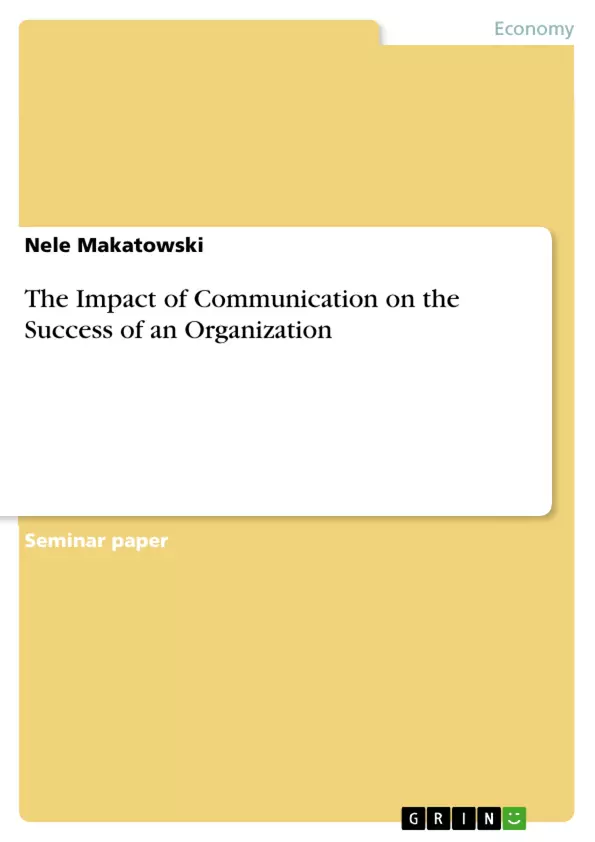The paper discusses communication in organizations and examines the impact of communication on its success.
More and more, organizations are in trouble trying to adapt their performance to the constant economic growth and transformation. As we all live in organizations and with organizations of all sorts, we know that an organization itself is based on communication. Therefore, all different sorts of organizations and the human communication are inseparable interconnected. The relationships between the forms of organizations and communication processes are the scientific experimental field of communication in organizations.
Inhaltsverzeichnis (Table of Contents)
- Introduction
- Definitions and theoretical approaches
- Functions of communication policy
- Communication and stakeholders
- Role and management of communication
- Baseline and challenges
- The managers function
- The employees function
- Internal communication
- Conclusion
- Literature
Zielsetzung und Themenschwerpunkte (Objectives and Key Themes)
This essay explores the vital role of communication within organizations, highlighting its impact on success and reputation in today's rapidly changing global landscape. The essay analyzes the importance of communication policy, emphasizing its key functions and the multifaceted relationships between organizations and their stakeholders.
- The importance of effective communication for organizational success in a globalized world.
- The impact of communication on organizational reputation, trust, and stakeholder engagement.
- The different functions and sub-categories of communication policy, including microeconomic and macroeconomic functions.
- The relationship between organizations and their stakeholders, including internal and external groups.
- The key concepts and models of organizational communication, including goals, members, stakeholders, identity, values, and culture.
Zusammenfassung der Kapitel (Chapter Summaries)
- Introduction: This chapter emphasizes the significance of communication in a dynamic global environment, where organizations face numerous challenges including changes in trade, economic development, and communication technologies. It highlights the need for organizations to foster trust and authenticity with stakeholders to ensure their success.
- Definitions and theoretical approaches: This chapter defines key concepts such as communication, corporate communication, and communication policy. It discusses the different types of communication and the two key functions of communication policy: microeconomic and macroeconomic.
- Communication and stakeholders: This chapter explores the complex relationships between organizations and various stakeholder groups, including their direct and indirect connections. It emphasizes the importance of understanding stakeholder behavior and the impact of organizational activities on stakeholder perceptions.
- Role and management of communication: This chapter delves into the management of communication within organizations, outlining the key functions of communication managers and employees. It discusses the challenges and strategies for effective internal and external communication.
- Internal communication: This chapter focuses on the internal communication processes within organizations, highlighting the importance of clear and consistent communication to ensure employee understanding and engagement.
Schlüsselwörter (Keywords)
The main keywords and focus topics of this essay include communication, organizational communication, corporate communication, communication policy, stakeholders, reputation, trust, authenticity, microeconomic function, macroeconomic function, internal communication, and external communication. The essay explores these concepts within the context of organizational success in a globalized world.
- Quote paper
- Nele Makatowski (Author), 2020, The Impact of Communication on the Success of an Organization, Munich, GRIN Verlag, https://www.grin.com/document/931548



